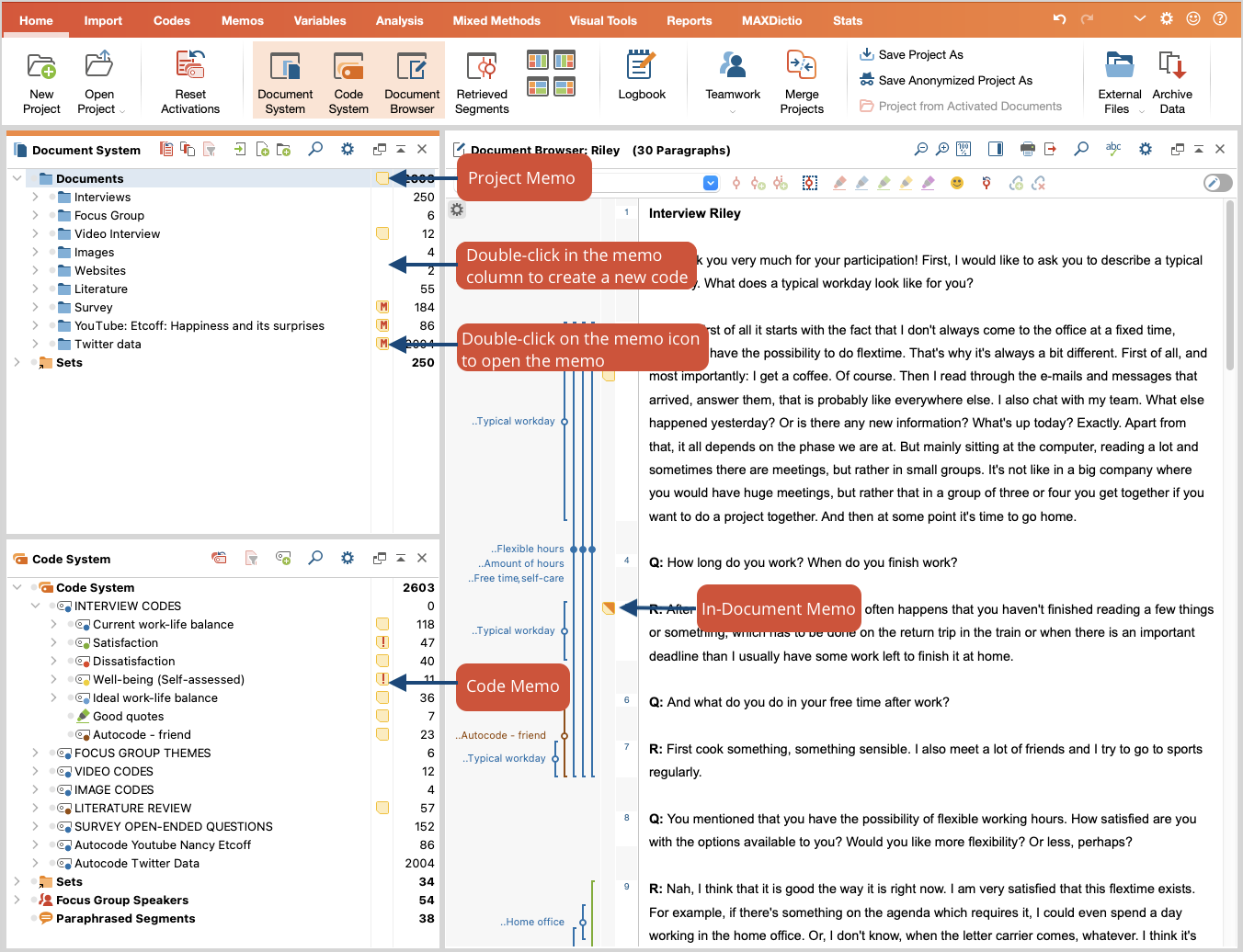MAXQDA makes it possible to create your own notes and remarks and to attach them like post-it notes to text passages, texts, document groups, images, audio/video clips and of course codes. In MAXQDA these remarks are called "memos". Such a memo can contain very different things: While one memo contains a short summary of an interview or hints for its course, another memo contains first ideas for theory development or hints for the use of a developed category.
Especially in social science it is common to work with memos and there it is above all the research style of Grounded Theory developed by Glaser and Strauss in which memos play an important role. But regardless of the research method chosen, it is important to clarify the difference between the memos and the qualitative data: The qualitative data are processed and analyzed but are usually not significantly changed once the evaluation and coding has begun - at best, typos are eliminated. Memos, on the other hand, are a dynamic type of text, they are products of the users and can be changed, supplemented, modified, and integrated at any time.
In MAXQDA you can assign memos in numerous places:
„Document System“ |
|
„Document Browser“ |
|
„Multimedia Browser“ |
|
„Code System“ |
|

There is also a memo type, the "free memo", which is not directly assigned to a position in the data, nor to a document or code. Such memos also exist in the research style of Grounded Theory, they do not belong to a certain original text, but exist freely floating without concrete assignment.
